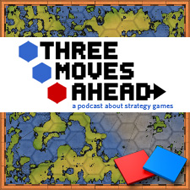Whenever someone says that they don’t like a game, the title’s fans will almost always ask the same question: “How long did you play it?”. The questions takes many forms. “How far did you get?” “Do you have the x yet?” But the implications are the same. You cannot, apparently, have a valuable opinion on a game until you have played it to a certain point.
The question remains, where is this point? As a sometime game reviewer, I am duty bound to spend a lot more time playing some games I’m not enjoying than I would if it’s just some collection filler from Ebay. When I tell my casual gaming friends the hours I put into a title that I gave two stars, they think I’m insane.
But, as a strategy gamer, I have to confess that many of the great games in my pet genre require a little more time to find the magic. Take Europa Universalis and its sequel – a title which I think is a modern classic. I was sucked in right away. Others need to put in more hours to be enchanted, so I fall back into the tired old advice to keep at it and ask questions if they need help.
Of course, if EU had come with a better manual, more people would get into it faster. And, even after all the extra time, I can’t guarantee that everyone will like it.
I have two good casual gaming friends. In the last year or so, I’ve recommended three games to them in different contexts – Political Machine, Pirates!, and Rome: Total War. Both immediately got into the first two. They would come to lunch and we would talk about how tough Roosevelt was as an opponent or which Caribbean power had the hottest governors’ daughters.
Rome was a split decision though. One guy loved it. He would be up until the wee hours of the morning playing. He would IM me with questions about how to beat scythed chariots. The other guy didn’t. And the way he described it, he didn’t seem to have played very much of it. Both had borrowed my disks, so there was no financial obligation to find something to like, and he admitted that he could see why we enjoyed it. But I was not convinced that he had given it a fair shot.
It became clear that he had played through the tutorial, including the intro “Unite Italy” campaign. Though an excellent tutorial for demonstrating the interface and how the game plays, like many good strategy games, the tutorial is only an appetizer for the main course – the Imperial Campaign with lots of generals and barbarians and elephants.
I know people who almost quit playing Baldur’s Gate because it opened with lame FedEx and rat-killing quests. I’ve certainly quit playing some Euro-strategy games because I couldn’t make the economy work. Does that disqualify me from saying that I think Anno 1602 is overrated?
Games are a strange thing. We would rightly ridicule someone who formed an opinion on a movie without seeing it, but games require a greater time investment. Should someone have to finish a RPG before they can have a strong opinion on it? Do we condemn our fellow gamers to hours of misery in a game they are not enjoying just so they can talk about it? In today’s broadband world, should we require that our fellow gamers try out the multiplayer part of game in case they find that that is more their cup of tea?
So how long should we expect someone to play The Sims? Should a game grab you in the first two hours? What if it takes that long to figure out the relationships between items and units? Does it vary from genre to genre? Comment away.

